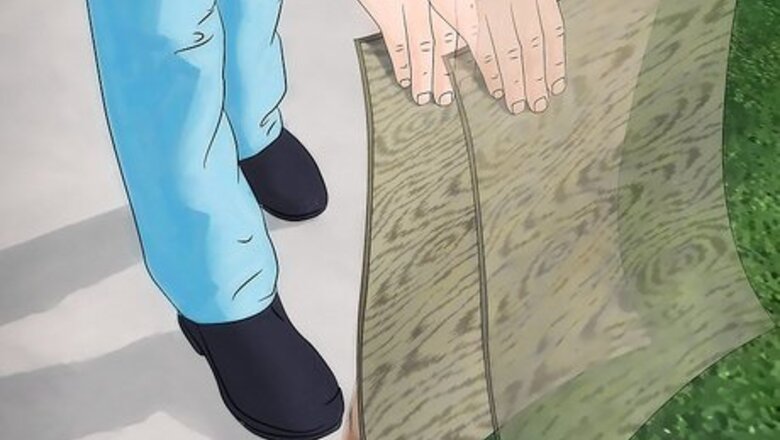
views
Cleaning Your Wool Rug
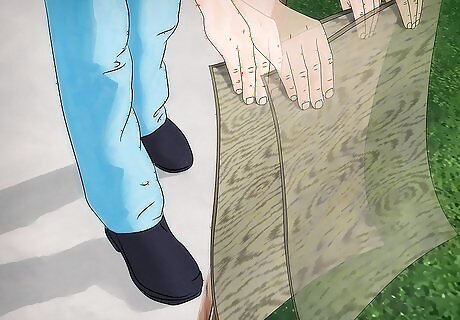
Take your wool rug outside. Shake off any loose dirt or dust that has accumulated on your rug since buying it or cleaning it last. Dirt and dust rubbing against rug fibers actually prove to be damaging to the quality of the rug over time. Be sure that it is dry wherever you shake it out. Wool gets weaker when it’s wet, and shaking a wet rug can further embed the dirt you are trying to remove. Don’t let your rug get completely wet since it can easily form mold or mildew. If possible, designate an area where you can hang a clothesline and hang the wool rug like that. Beat against the rug with a broom to help shake it clean.
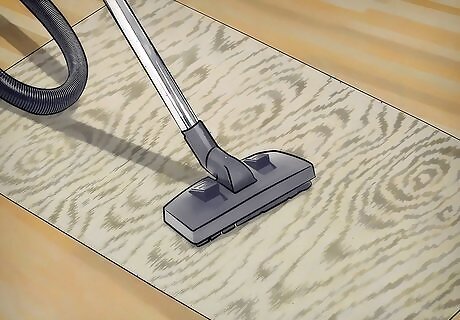
Run a vacuum over your rug. Vacuum the rug in a “V” action to alternate the vacuum’s direction and prevent crushing the fibers of the wool rug. Repeat this 3 times over the wool rug. To keep dirt from building up and embedding itself in your delicate rug, you should be vacuuming regularly: twice a month. Vacuum the underside of your wool rug once every 2 months. Make sure the vacuum has a setting of a high height to avoid agitating the rug excessively. Shrinkage, piling, and overall damage to the wool fibers can be a result of agitating the rug too much.
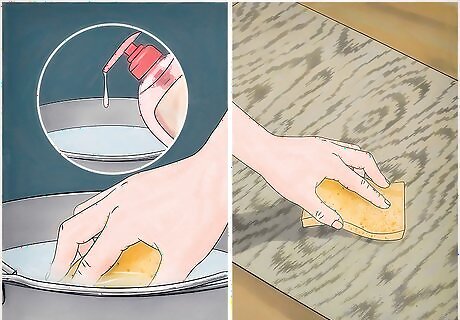
Shampoo the rug once all of the dirt has been removed. Sponge the rug with cool water and a mild liquid soap or rug shampoo. Wash the fringes of the rug with the same solution. Make sure that you wet the rug, paying special attention to the nap of the rug. When you brush your hand against a rug toward the outer edge in linear motions, one side will feel rough and the other side will feel soft. The soft side is the nap side. Apply the soapy water in the direction of the nap side. To finish the job, rinse all the soapy solution off the rug thoroughly with water. Make sure all soap is out of the rug before continuing on to the next step.
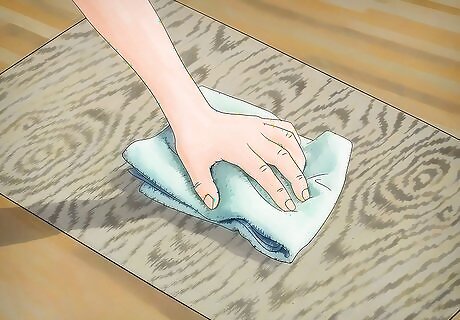
Dry your rug immediately. Wool rugs require an extensive dry so do your best to get rid of any excess moisture on the rug by squeezing it out or hanging it out to dry under the sun. Never place them in a dryer, but feel free to use heaters to help facilitate its drying speed. Once the nap of the rug is dry, turn it over, and dry the back of the rug. Make sure both sides of the rug are completely dry before placing it back on the floor. If the material feels stiff after drying, vacuum the rug one more time or brush it gently to bring some of its softness back.
Treating Spots & Stains
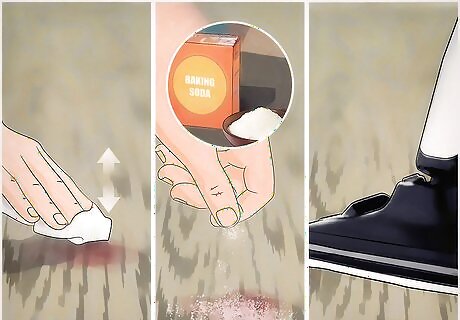
Prevent long-term stains by removing them immediately after they occur. Blot the rug with a towel to remove as much moisture from the mess or stain. Scrubbing will only deepen the stain so it's important to pull the stain out by blotting the rug, not by rubbing it in. Sprinkle the damp area with a liberal amount of baking soda. Let the baking soda sit on the spot for at least 30 minutes and then vacuum the area.
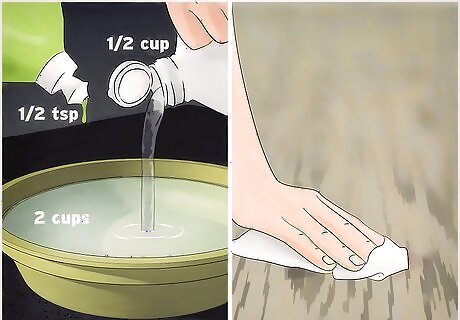
Treat spots with a diluted vinegar mixture. Mix the ⁄2 tsp (2.5 ml) of dishwashing liquid, 2 c (470 ml), and ⁄2 c (120 ml) of white vinegar together in a bowl. Using a clean sponge or towel, scrub the mixture onto the area. For wool rugs with pile on them, be gentle with the scrubbing to maintain the wool’s polished look. Spot treat a small area of the wool rug to test whether or not the rug will have an adverse reaction to the cleaning agent. Typically avoid dry powder cleaners, alkaline cleaners that contain soda ash, Oxy cleaners, hydrogen peroxide, and bleach to treat stains or clean wool rugs. Alternatively, mix 1 teaspoon (4.9 ml) of ammonia per 1 cup (240 ml) of water. This mixture works well on pet stains.
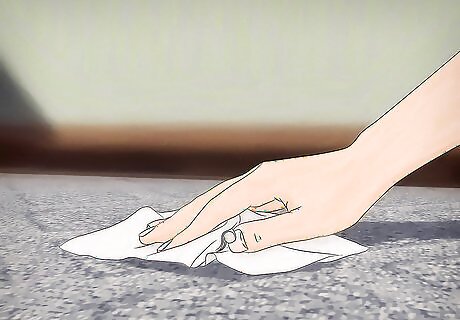
Blot the area with cold water and a clean towel. Place the dry towel on top of the area and, using your hands, press your full weight on different areas of the towel to absorb as much moisture as you can from the spot. Repeat this motion on different parts of the towel until the spot is mostly dried.
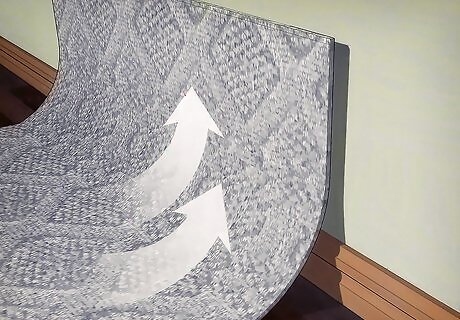
Lift the moist part of the rug by propping it up against a piece of furniture. This will allow air to pass up and underneath the rug and give you access to any wet spots that might need to be cleaned up from the spill seeping through the rug. Turn on a heater or the ceiling fan to help the rug dry faster.
Maintaining Your Wool Rug
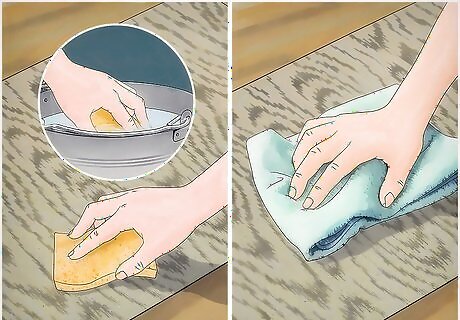
Wash and clean your rug as needed. Depending on where the wool rug is placed in your home, cleaning might range from once a year to once every several years. A professional cleaning is recommended, but as shown above, it can be a job you do yourself. To see how dirty your rug is, lift it by a corner and kick the back of it. If dirt comes out, it is dirty and in need of a cleaning. If nothing happens, a cleaning isn’t necessary.
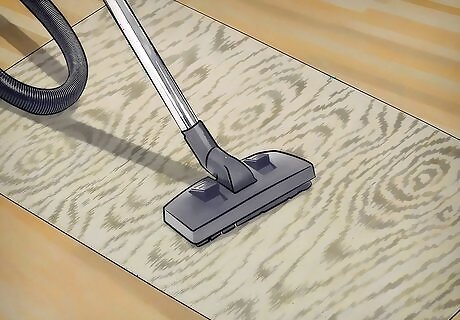
Vacuum your rug regularly. Vacuuming is how you keep your rug clean in between the yearly washings. It is essential to keeping dust and dirt from everyday foot traffic at bay. For the first year of a wool rug’s life, vacuum at least 2-3 times a week. For areas that have high traffic, vacuum once a week. For older rugs and areas that have less traffic, vacuum once every couple of months. Do not vacuum with vacuums that have a brush or beater bar. Try to limit the type of vacuum to suction-only options.

Rotate your rug every six months to a year. By doing this, you regulate how often areas of the rug get stepped on. Wool rugs should be rotated at a 180-degree angle periodically to counteract foot traffic patterns on the rug.
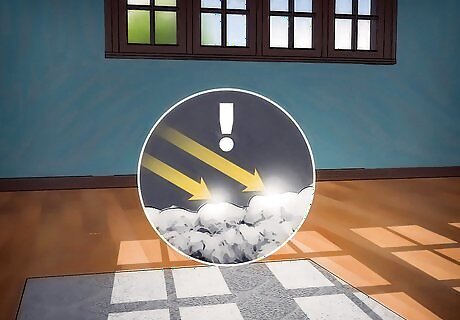
Reduce the amount of direct sunlight that your rug sees. Use shading to reduce sunlight in sunny rooms. Apply UV filters to windows to prevent wool fibers from weakening and the wool from drying out.




















Comments
0 comment